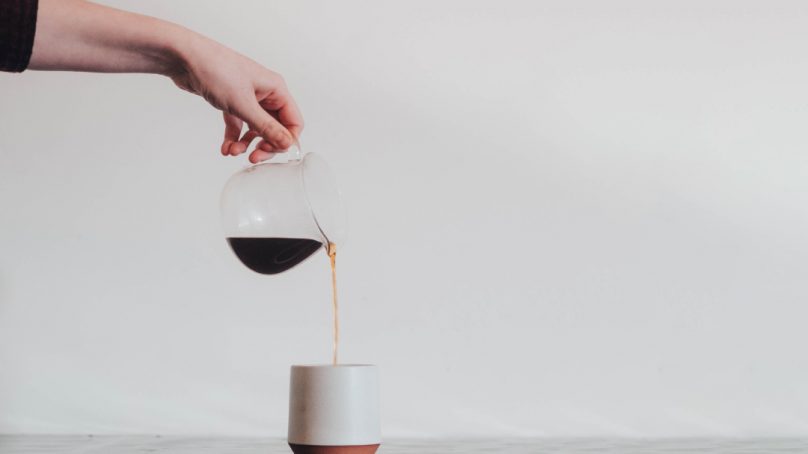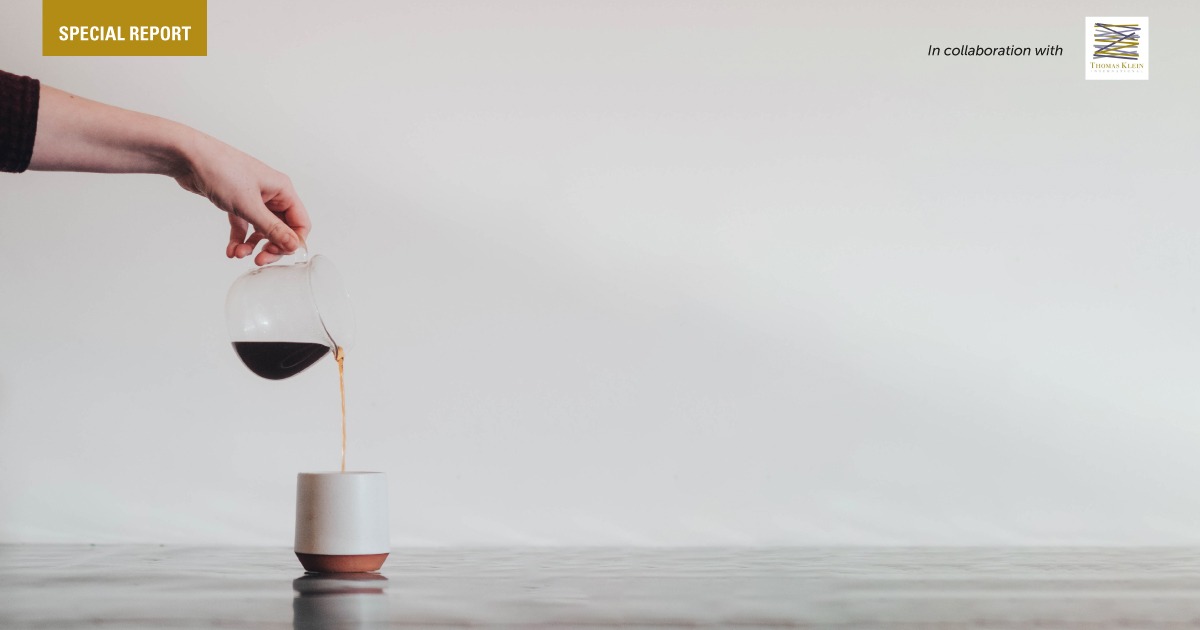Simone Remba, consultant at Thomas Klein International, shares her personal relationship with coffee — one of the world’s most popular drinks.
Like most avid caffeine consumers, I have made coffee an integral part of my day for as long as I can remember. As life progressed, so did my dependence on the crutch that is Coffea Arabica. With an abundance of high-caffeine alternatives (such as matcha tea), perhaps I drink it out of habit as opposed to necessity. Does my predominately sweet palate actually like it, or is the bitter aftertaste overshadowed by the feeling of security, routine and confidence that coffee gives me?
Digging deeper, there is an intrinsic correlation between when and why I drink it. Am I chemically addicted to the way it stimulates my central nervous system by promoting the release of neurotransmitters, or am I just emotionally dependent on its physiological pick-me-up properties?
A cup at home
The unwanted morning alarm rings, and my sleep-heavy eyes open. One of the first things I do in is put the coffee machine on. The smell of my Ethiopian Sidamo medium roasted beans silently brewing is succeeded by the warmth of the liquid gold in my mug against my hands. I can’t truly describe how gratifying that first sip is.
A cup with friends
A cup with friends When the social, professional and general pressures of life reach a peak, I reach out to friends for a catch up over a coffee. A calm, lazy afternoon turns into therapeutic mediation, and with every sip, I get to offload the passing week’s frustrations.
In the digital world we live in, aesthetically, coffee continues to be one of the most powerful visual marketing tools. At some point, most of us have been susceptible to the obligatory coffee Instagram post: a cappuccino with a foam-heart design strategically placed on the table capturing the décor and view. There was a time when a Starbucks to-go cup was the go-to celebrity accessory in New York City.
The boom of the specialty coffee industry has notably aided in strengthening the visual pull of what coffee can be. The more elaborate or intricate your coffee order is, the more creative you are perceived to be. What was once the fight for the best burger joint in the city has now transitioned to a battle for the best coffee joint as home-grown speciality coffee brands continue to multiply and populate every street globally at an alarming rate. Although staple franchises such as Starbucks and Costa Coffee will always have their place in the market, home-grown speciality coffee brands have more than surpassed industry forecasts and expectations.
Coffee continues to be a pillar of our social interactions. Within Middle Eastern history, coffee houses were always considered as places to gather, appreciate music, the arts and discuss political and social affairs. To this day, the tradition lives on.
Despite my dependence on coffee, I do consider myself as an equal caffeine opportunist, as I am also a tea enthusiast. In the great debate of coffee versus tea, I sit on the fence because I appreciate the world of tea not just for its caffeinated properties but for its multiple health benefits too. Coffee will boost you up the mountain of energy quicker, but you’ll experience a slippery and steep decline. Tea is the underdog, much like the fable The Turtle and the Rabbit, running a slow and steady race. It is like comparing apples to oranges: both fruit but yet so different. Today’s accessibility to tea makes us forget that this simple leafy drink, originating from China and the Far East, played such a pivotal role in many global wars, such as the American Revolution and the First Opium War.
And who can we thank for our dependence on coffee? For those who believe, the coffee lore dates back to ninth-century Ethiopia, where Kaldi — a simple goat herder — noticed that the goats that ate the unknown bright-red fruit would become energetic at night. Upon further investigation with the local monastery, it was discovered that when roasted in the open fire, crushed and mixed with water, this elixir gave them an indescribable boost of energy for prayers and various activities. As this newfound anomaly spread among monks and monasteries, the coffee industry was born.
It almost seems farfetched to believe that a simple goat herder is responsible for the creation of one of the most popular drinks in the US — the Starbucks Pumpkin Spice Latte (two shots espresso, two percent steamed milk, four pumps pumpkin sauce and pumpkin spice topping with whipped cream). The simple fact is that people love coffee.





















